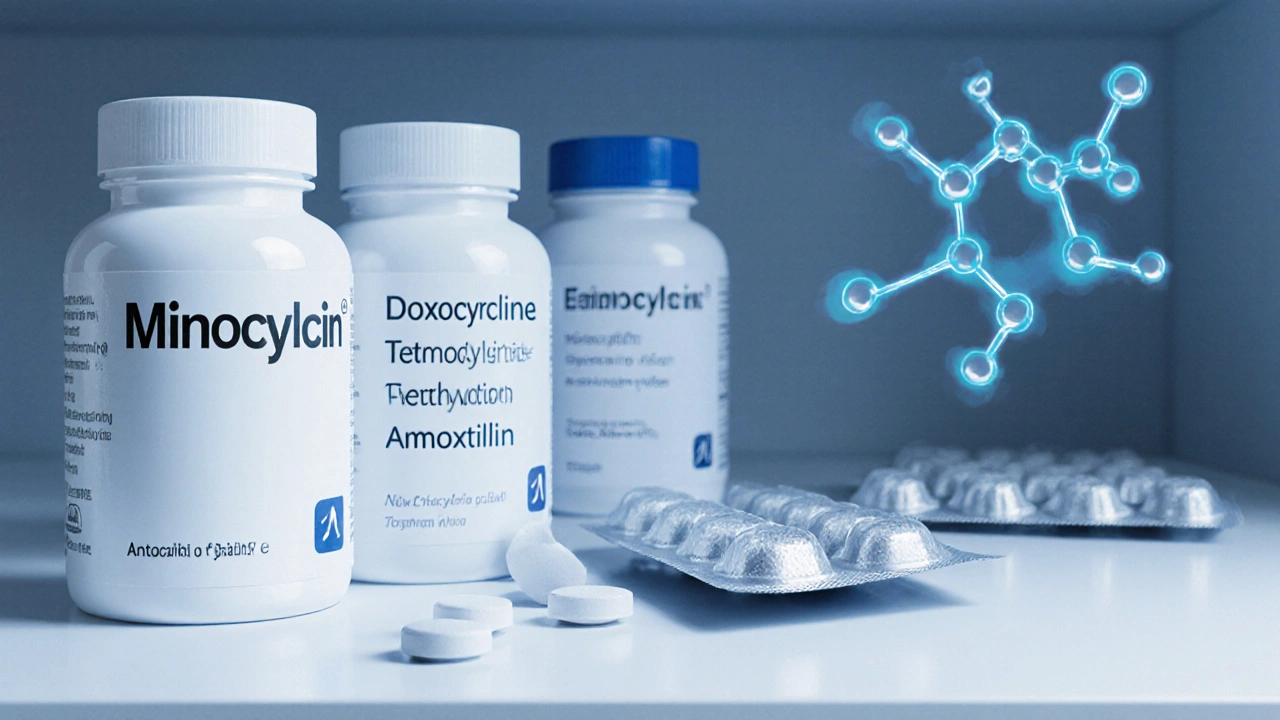Doxycycline Comparison: Alternatives, Uses, and What Works Best
When you need an antibiotic that fights a wide range of infections — from acne to Lyme disease — doxycycline, a broad-spectrum tetracycline-class antibiotic used to treat bacterial infections including respiratory, skin, and sexually transmitted infections. Also known as a tetracycline derivative, it's one of the most commonly prescribed antibiotics worldwide. But it’s not the only option. Many people wonder: is doxycycline really the best choice, or are there safer, faster, or cheaper alternatives?
Let’s talk about what tetracycline antibiotics, a family of antibiotics that inhibit bacterial protein synthesis, including doxycycline, minocycline, and tetracycline itself actually do. They stop bacteria from making proteins they need to survive. That’s why they work for acne, urinary tract infections, tick-borne illnesses like Lyme, and even some types of pneumonia. But not all tetracyclines are the same. minocycline, a second-generation tetracycline with better tissue penetration and longer half-life than doxycycline can be more effective for severe acne but comes with a higher risk of dizziness and skin discoloration. Meanwhile, tetracycline, the original drug in this class, requires strict dosing on an empty stomach and has more side effects than doxycycline — which is why many doctors skip it entirely.
Then there are non-tetracycline options. For acne, clindamycin, a lincosamide antibiotic often used topically or orally for inflammatory acne is a go-to when doxycycline fails or causes stomach issues. For respiratory infections, azithromycin, a macrolide antibiotic with a shorter course and fewer GI side effects is often preferred because you only take it for 3–5 days. And for Lyme disease, while doxycycline is still first-line, some patients get better results with amoxicillin — especially kids or pregnant women who can’t take tetracyclines.
Cost matters too. Generic doxycycline is dirt cheap — often under $10 for a full course. But if you’re dealing with resistant infections or need something gentler on your stomach, you might pay more for alternatives like minocycline or azithromycin. And let’s not forget side effects. Doxycycline can make your skin burn in the sun, upset your stomach, or even cause yeast infections. If that’s you, switching isn’t weakness — it’s smart.
There’s no one-size-fits-all antibiotic. The right choice depends on what you’re treating, your age, your other meds, your budget, and how your body reacts. That’s why so many people look for real-world comparisons — not just textbook answers. Below, you’ll find detailed, no-fluff breakdowns of doxycycline versus its top alternatives, including real patient experiences, cost differences, and what doctors actually recommend today. Whether you’re fighting acne, recovering from a tick bite, or just trying to avoid another bad reaction — this collection gives you the facts you need to make a better call.

Minocin (Minocycline) vs. Alternatives: Benefits, Drawbacks & Best Uses
A detailed comparison of Minocin (minocycline) with common antibiotics, covering uses, side effects, cost, interactions, and when to choose each option.
October 6 2025